
|

|
DROP YOUR DETAILS IN BELOW FOR NEWS AND PROGRESS UPDATES

I wanted to share this sequence of images with you and so thought I’d accompany it with a few observations I find interesting about the Mentawai shaman, Sikerei.
Firstly, to become Sikerei is to devote ones life to teaching, healing, and protecting the people; this is their role. One important component of this role involves learning from their predecessors the skill and knowledge, not just to identify every single species of plant and animal found within their dense rainforest surroundings, but also to know the ways in which each of these can or can’t be used in support of their survival. Which obviously is quite beneficial. Allowing them, among other advantages, access to an extremely large and well-stocked medical cabinet.
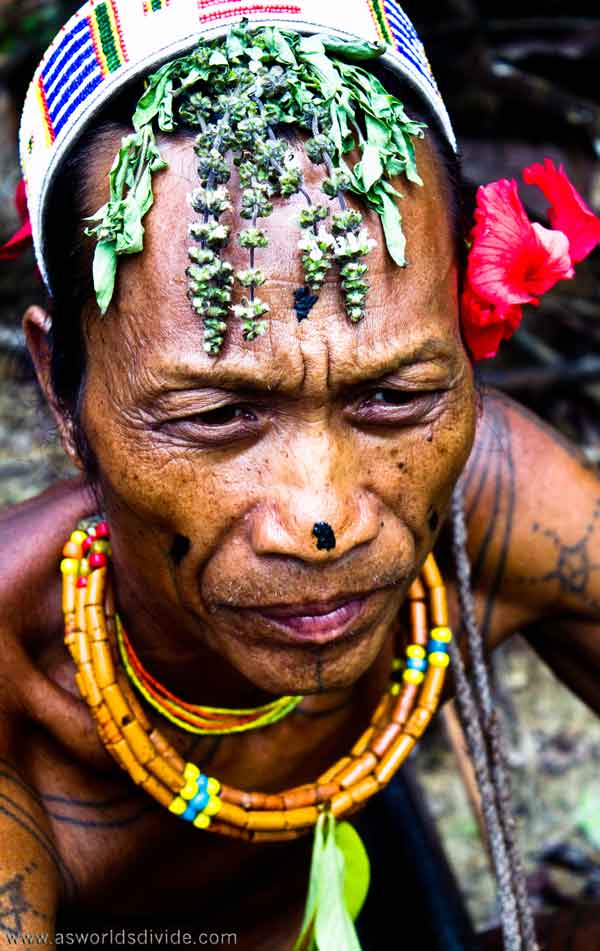
To give this context I’ll recall an incident where, roaming through the jungle one afternoon, I, the stupid foreigner, thought I’d spotted out the corner of my eye a nice plump freshwater shrimp basking in the shallows of a small stream. Moving fast I snatched it up from between the stones. Score. To my surprise though its tail suddenly swang 180º in an uncomfortably wrong direction and proceeded to insert a poisonous spike into the side of my finger. Ah, right, a scorpion. Within moments of this occurring I was being handed a tuff of grated root the youngest of three Sikerei had foraged from the base of a nearby tree, along with the instruction to elevate, hold against the wound, and to advise if the poison reached beyond the wrist area so they could gather and prepare an alternative solution. Ah, ok.
Reflecting back now, being situated there in the depths of a remote rainforest, days from any standardised medical facility, what would I have done had I not been in the presence of such wisdom? I’m not sure. Sat there and cried, probably. But, instead, all I felt was incredibly safe. Which, incidentally, happens to be the principle aim of their role.

Moving away from their societal services, another particularly refreshing trait commonly found in Sikerei – and in most people still practicing a traditional Mentawai lifestyle in fact – is their eagerness to find humour in every aspect of life in much the same way as a child can. A behaviour also found documented in journals dating back as early as 1902, where travellers to Mentawai spoke of time spent ‘with the amiable savages’ and ‘on the Island of happiness’ (REEVES, 2000).

Coincidentally, or perhaps not, what I find interesting about this is that within traditional Mentawai society the figure of a child is revered. In fact, in many ways, the sustainability of their entire culture, lifestyle and peaceful existence is held together by the devotion given to the child. This reflected by the belief they share through ancient cultural myths and legends that reveal almost every resource and skill that has become an integral part of Mentawai lifestyle, and been key to sustaining their survival, was given to them through the spirit of a child.
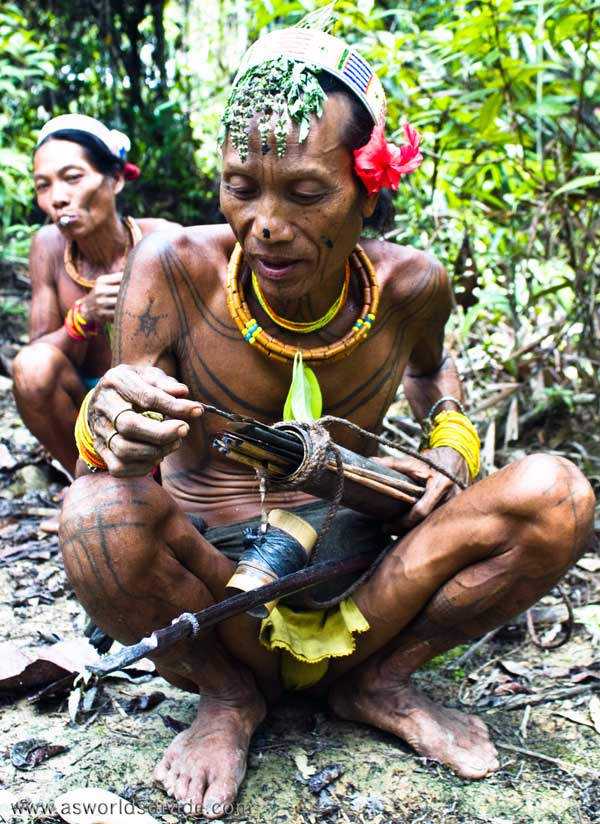
It may be thought fanciful to theorise that an ancient cultural system where a society places the child as the most sacred member could be largely responsible for the jovial and spirited nature of its people; but, whilst pondering your own opinion, do consider what life might be in a world where, as a child, the thing you’re taught to be most proud of is to be a child; where, instead of being taught to fear the responsibilities of adulthood and be faced with the pressure of needing to ‘grow up’, childlike behaviour is actually encouraged in adults, by adults, and celebrated as a wonderful form of entertainment and enjoyment. Because, in such a life, it might just be that the act of being foolish and carefree, the freedom we admire so much in our young, never dies…
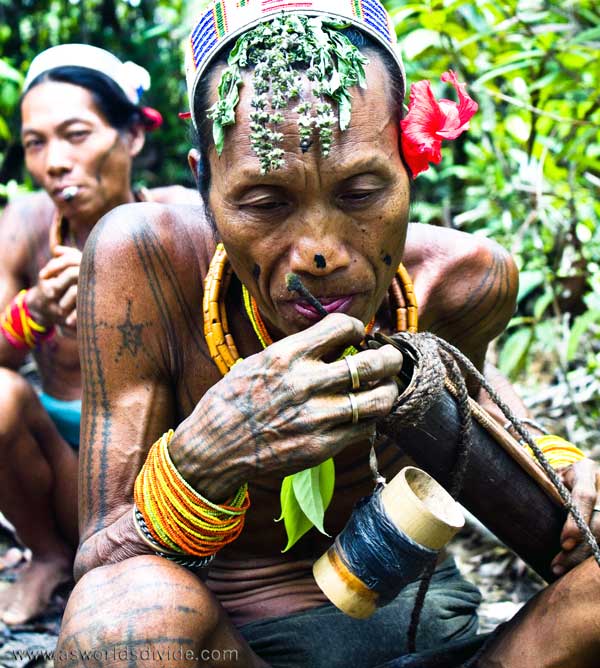
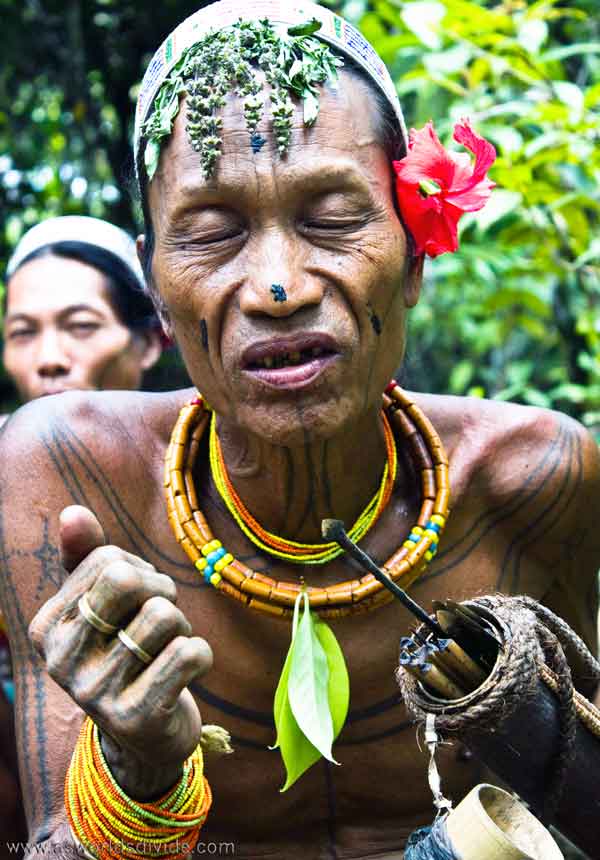
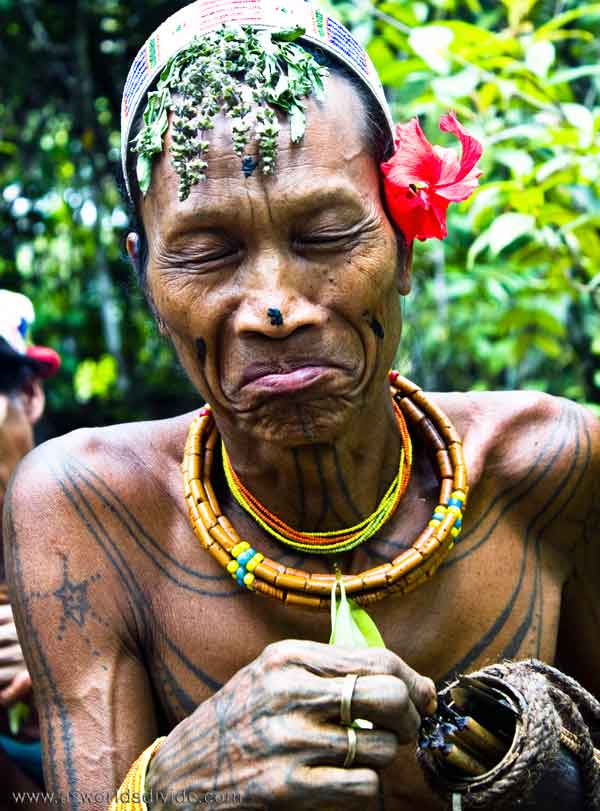

To clarify exactly what this project entails and hopes to achieve I have formulated a vision board; a simple step-by-step infographic identifying the problem, how this was found, the solution, and a pathway to achieving its long-term goal. I have posted a copy of this here for you to examine.
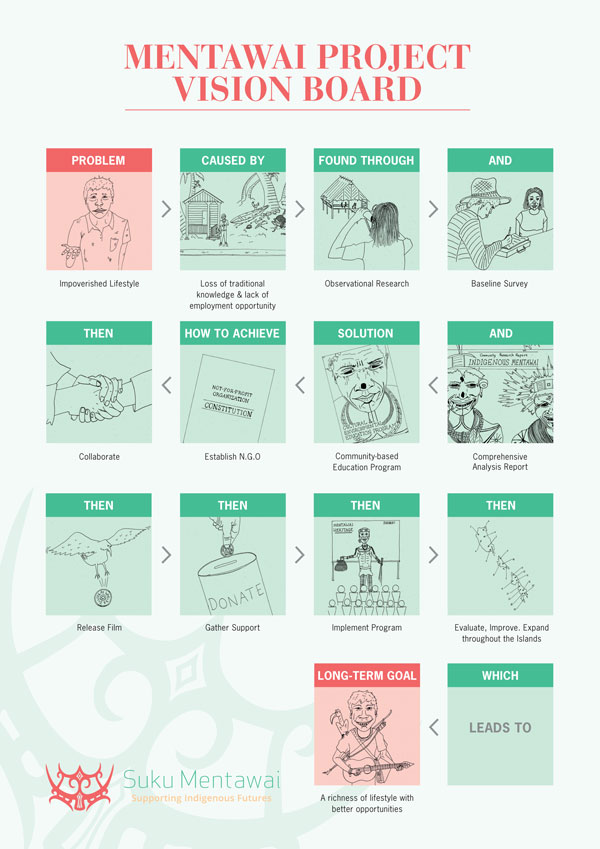
As you can see, the film, BUI MAREUREU BAAP As Worlds Divide, is to play an extremely important role within this strategy. Basically it is the link between the voice of indigenous Mentawai and a global community; the key to raising international awareness as to why this project is important, what is at stake, and the vital role we – as viewers – can play in helping the Mentawai community achieve their goals and build a better future.

At present, with almost all major components of this strategy now ready for release, I am working on trying to gain support from associated networks to collaborate and execute a release strategy. Hopefully I’ll have some positive news to share over the coming weeks. Excited. Stay tuned.
Also, big thanks to Marky, Fletch and Gaz for your work on the vision board document design. Ace.
I’ve just returned from a relatively short trip back to the Islands, which, as always, was wonderfully uplifting. The motive for this particular journey came via an invitation to attend a cultural celebration held for the construction of a new Uma (long house), which was built last year by Sikerei, Aman Masit Dere and his son, Aman Kacau.
As is the focus of this ceremony, the souls of the spirits (simagere) that have since remained situated in the previous – now abandoned – Uma are ushered a path from the old and into the new, where they’re then showered with cultural song, dance, music and offerings. A practice given to ensure safety and protection for the dwelling and for their clan’s future, as described in more detail HERE.
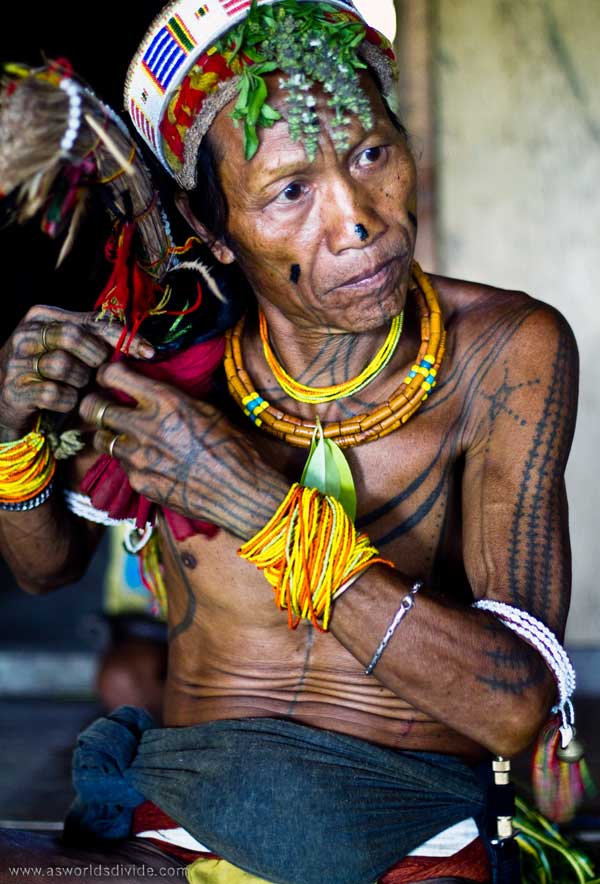
Interestingly, this Uma, which would be large enough to accommodate thirty to forty residents at any one time, and also happens to be situated in a rather remote jungle location, took the two of them approximately three months to erect… all without the assistance of machinery.
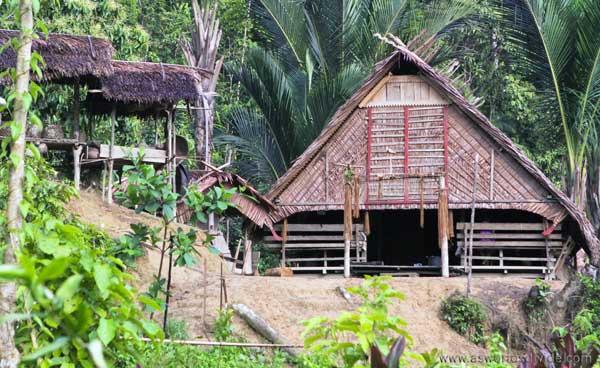
Sharing this experience with a few close friends and a family member, I didn’t film much of the ceremony. However, I did manage to capture a few images throughout our stay, which I’ll endeavour to share with you over the coming months.
With regards to the project, I’m looking to now organize a series of screenings where I’ll present the film and vision to selected persons, hopefully, in exchange for their support. I’ll write in more detail about this soon though… feeling a little too relaxed to delve thought into such topics right now. Enjoy the images.
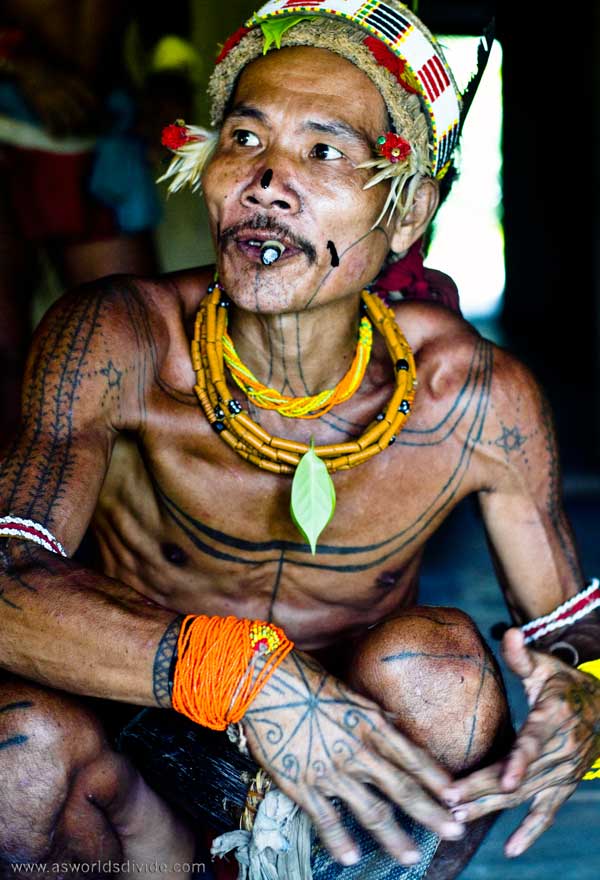


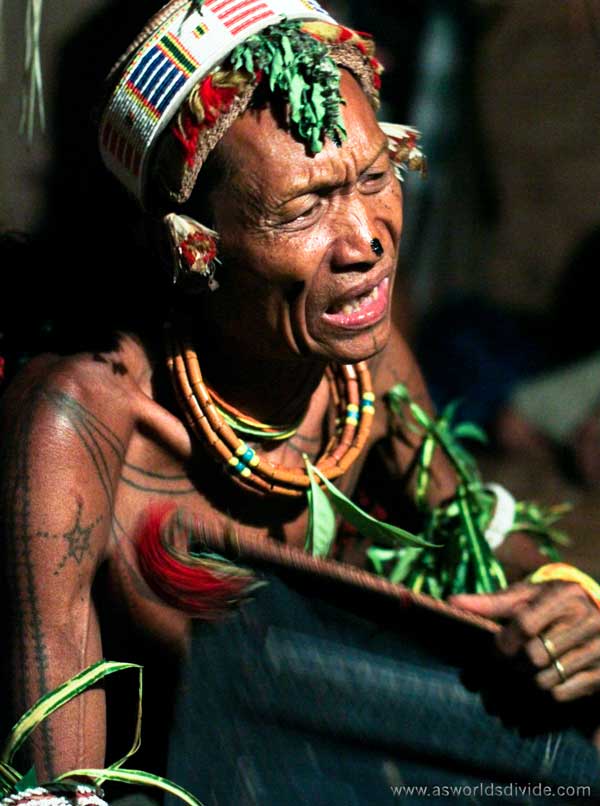
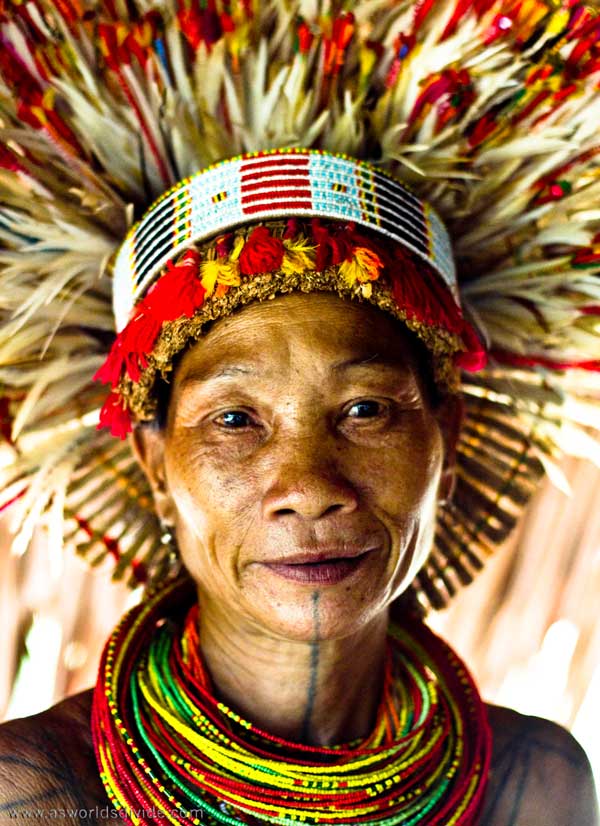
To give a brief update on the project, I’d like to share with you the news that two key documents, which are particularly vital to establishing the project’s direction and further development, have now been completed.
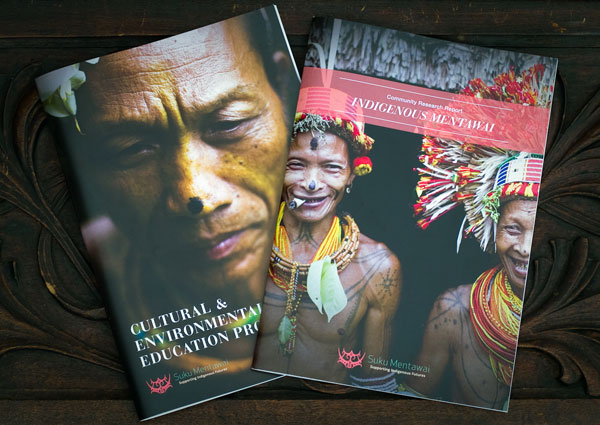
The first of these documents, the Indigenous Mentawai Community Research Report, presents a detailed analysis of the baseline survey alongside secondary/pre-existing research data; establishing a finding that, whilst the people do consider nationalised education to be important, the Indigenous community – including current leaders, schoolteachers and students – believe that learning the skills and knowledge of their native education is of far more importance to their future survival. Which, as is found through this research, with almost all of the Indigenous Mentawai community currently residing in settlement villages dotted throughout the islands, at present, the opportunity for children to learn about this simply does not exist.
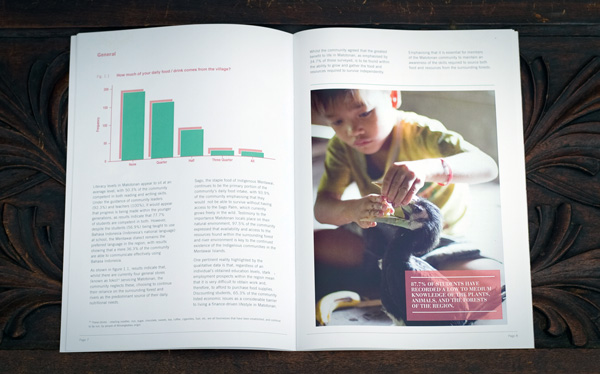
The second of these documents is a community-driven step-by-step implementation model for a Cultural and Environmental Education Program, based on a strategy that has been carefully developed in collaboration with the local community. Responding to their wants and needs, the aim of the Cultural and Environmental Education Program is to provide the people an opportunity to integrate important elements of their native Mentawai cultural and environmental education into their day-to-day learning.
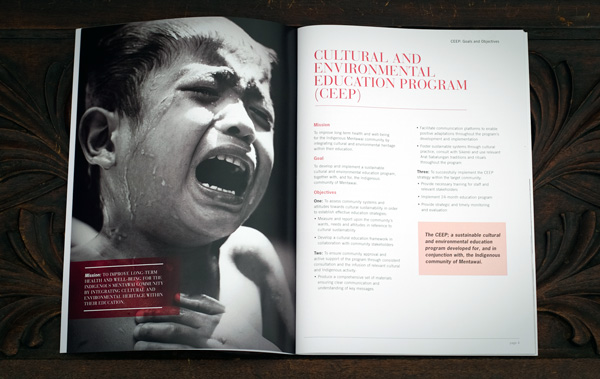
Pending a thorough content and design check, a website which will be both the central hub for information regarding the Cultural and Environmental Education Program and also a platform for viewers to watch the BUI MAREUREU BAAP As Worlds Divide documentary film upon its release, is also nearing completion. Meaning that, outside of the lengthy task of developing a constitution and navigating a way through the circus of legal hoops that are likely to surface, the film is the last major component requiring attention. Which, combined, are the current focus.
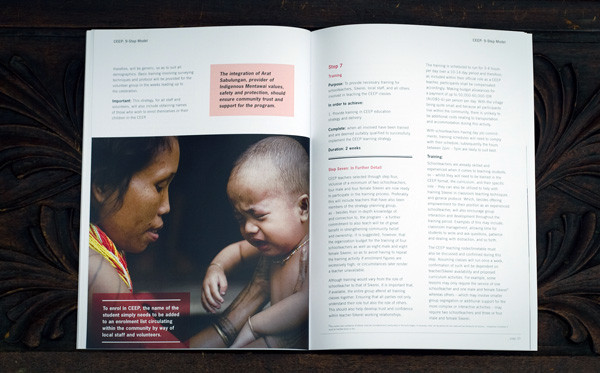
Again, thanks to Esmat, August, Matty and Lauren for the enormous amount of work they’ve given to these documents, and also to Fletcher Henry, Chris McConville, and Helene Barbe, who were collectively responsible for the wonderful design. More updates to come, stay tuned.
Given that the teaser and synopsis featured here on the film’s website no longer represented what the film is actually about, in light of the recent realisation and subsequent changes to the story, I’ve now replaced them with versions that actually do. Which you can view here below or otherwise in the designated areas found on the website, as per the previous.
‘BUI MAREUREU BAAP as worlds divide explores the intricacies of an ancient tribal culture, which, despite having allowed the Indigenous people of Mentawai Islands to flourish amidst a remote jungle environment for several thousand years, currently stands, along with Sikerei, the traditional custodians of this very knowledge, on the precipice of extinction.
Through contrasting experiences with both traditional and modern lifestyles on the island of Siberut, filmmaker Rob Henry provides a rare glimpse into the day-to-day life of the few remaining Mentawai tribes-people and those communities, which, over time, have neglected tradition. Revealing both a startling insight into the impact such fundamental change will bring for the future of the Mentawai people and how a community-driven plea has the potential to transform the lives of all.’

A big thanks to Andrew Bishop for his creative sound-engineering talents, and Lauren Shipman and Matt Hannon for their always-insightful feedback.
Some exciting new developments still to come; stay involved!
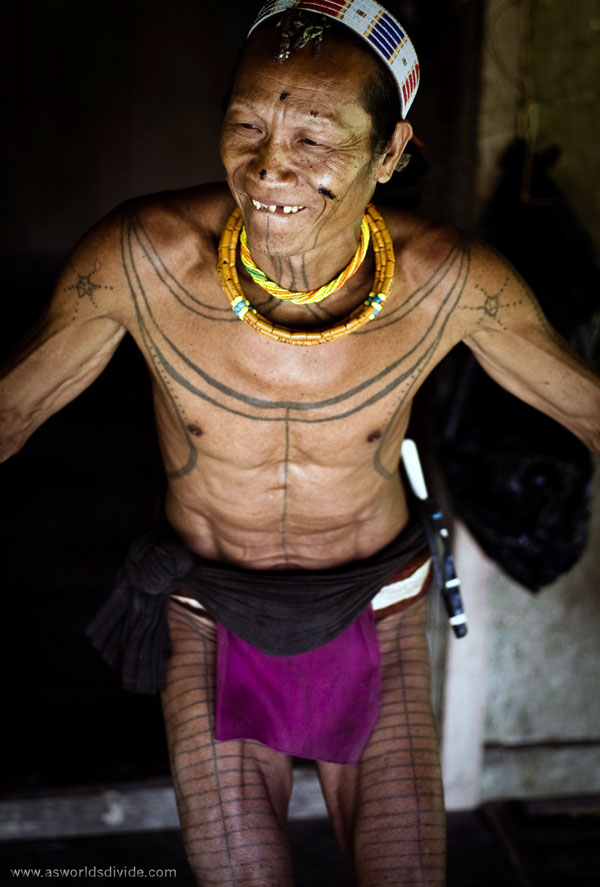
In light of the information presented in the previous post, and indeed the disposition its inspired, I wanted to post something a little more light-hearted, like a song. Well, a mixture of two songs actually. With the more predominant praising the healing and shamanistic abilities of Sikerei – as illustrated by the visuals shown in the video; and the second, which is slotted within the first, paying reverence to the natural beauties of their homeland, the Mentawai Islands. Enjoy!
To suggest there’s been a lot happen with this project over the past few years, in terms of the number of developments moving forward, backward and, more often than not, in circles, would be somewhat of an understatement. In fact, when considering the unconventional path it’s followed – particularly when knowing that, as I am still learning, it’s a path on which the project is likely to continue – I’m beginning to find it quite humorous. So, if nothing more than to add to this, I thought I’d best share with you a change that has occurred over the past few months, which, for me, has been by far the most exciting.
To explain how this change came to be, I’d like to start by taking you back to the beginning of 2010. Where, after having just returned from the Islands and, as a result of my experience there, having developed a profound belief in the spirit of community, I’d naturally felt that to grasp an understanding of how to transform this vision into the production of this project, the best approach would be to immerse myself in the experience of those who know. Which, in this case, would be through websites, forums, and other appropriate groups and networks; and so it began.
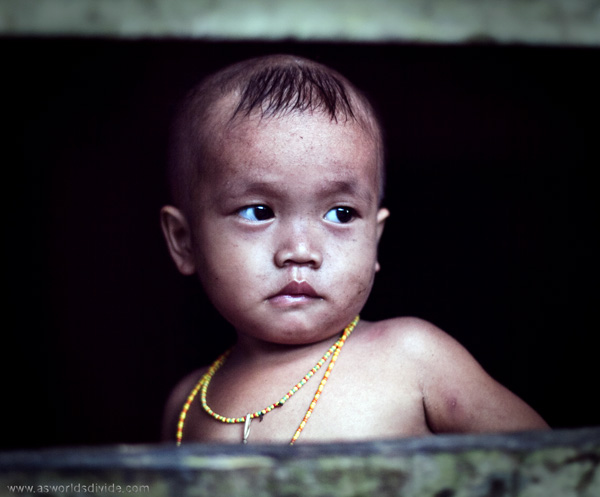
As the months unfolded, and I began to establish a sense of how these communities operated, I also began to develop a first draft of the film; which, amongst other things, would enable an opportunity for others to offer me their constructive critique. This was a period that, through having had a particular emotionally-driven vision for the film in mind and therefore a rough path to pursue, progressed with very little confrontation. Leaving me to believe that I may actually have known what I was doing. Though, six or so months in, after having finally completed and shown this cut to a couple of people working within the industry, I began to think otherwise.
To my surprise, I found that although the general response was quite positive, the actual criticism – which is of course the most crucial – was almost all in relation to my story… “But, how did you suddenly happen to be living in a foreign islander community, what drove you to do this, how did they react to you?” “Surely this experience must have had a significant impact on you? In what way? We need to hear more from you to understand the story.” Comments which, when considering my then belief that nobody would give a fuck about my plight in the face of such an incredible opportunity to learn about the fascinating lifestyle and people of Mentawai, were details I’d intentionally avoided.
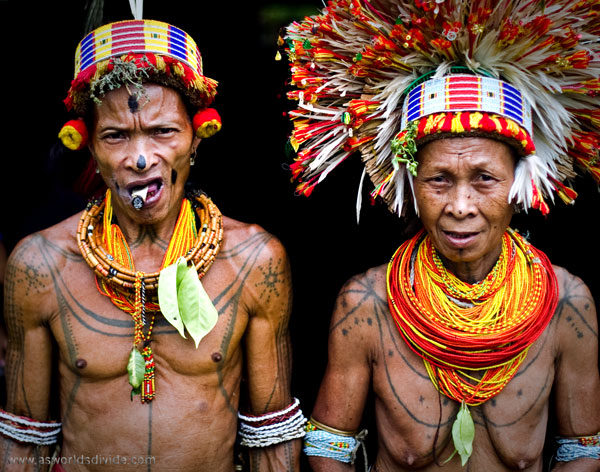
Further to this, and that which prompted a sense of misjudgement on my behalf, as this update and critique process continued and the film began to develop – each time adding a little more of my journey to aid the confusion of the viewer, so too did their focus toward evolving this particular strand. A trend which taught me that, amongst other things, if a compilation of disorganized scenes is presented without a story to provide each a sense of purpose – irrespective of how fascinating or aesthetically pleasing they are individually – this uncertainty will inevitably serve to distract the viewer away from just enjoying the simple beauty of what was originally intended.
Which, in the end, after updating and showing another six or more versions of the film, finally directed me to conclude that, for this documentary to work, to find a way to really connect the audience with the people, I’d actually need to use my character as the main protagonist and to deliver a story. Which, despite the obvious difficulties, did seem to make sense. Not only would this provide an arc and tangible link to introducing each step of information relating to the Mentawai people, but, on the back of this, could also provide an opportunity to share an insight perhaps pertinent to the future of others having difficulty understanding their place in a modern-day capitalist society.
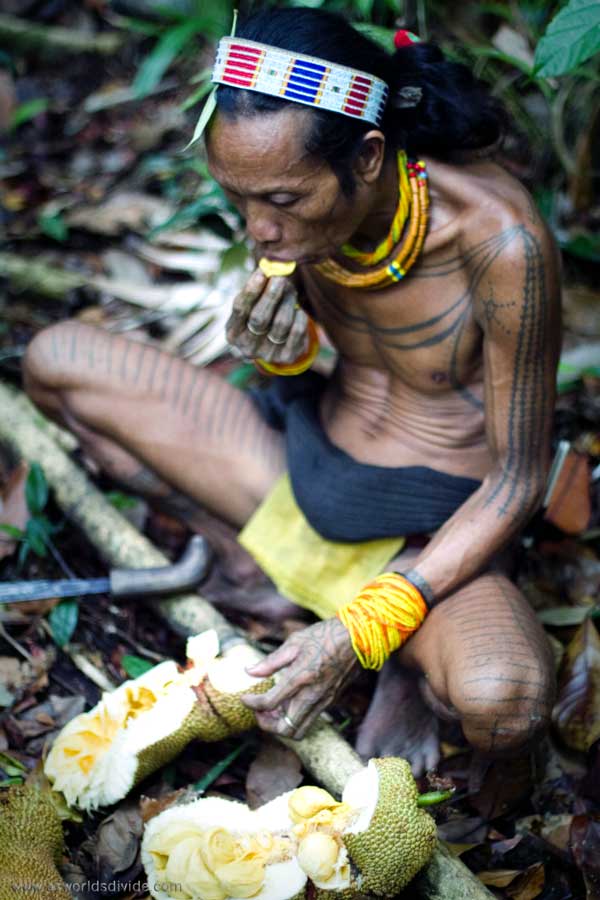
Agreeing that this was the way forward, but not having the experience to attract the support of a professional writer or script editor, I locked myself away for a rather long period, restructured the story, and wrote a deeply honest account of my experience living with the people of Mentawai. Reliving what I’d gone through there and how these people and their lives had – on a very intimate level – impacted me and, through forcing me to question what I’d once perceived to be reality, changed the way I look at life and the path I intend to follow. A transition, which, deeply moved by each additional discovery made about the Mentawai culture, their values, and sustainable behaviours, I hoped would carry the viewer through the film and allow them an opportunity to learn about this too, before deciding, for themselves, whether this knowledge and means of existence is worth protecting. A path, which, after completing and nervously presenting this new and rather personal version of the documentary to a group of experienced professionals, I discovered to not be as well received as I had hoped.
Instead, to my confusion, the constructive criticism had suddenly shifted into reverse. Indicating (although not quite as bluntly as this) that my approach seemed somewhat self-indulgent, that my character carried too much weight and that, basically, the story needed to be more about the people. Which, in a round about way, I thought was.
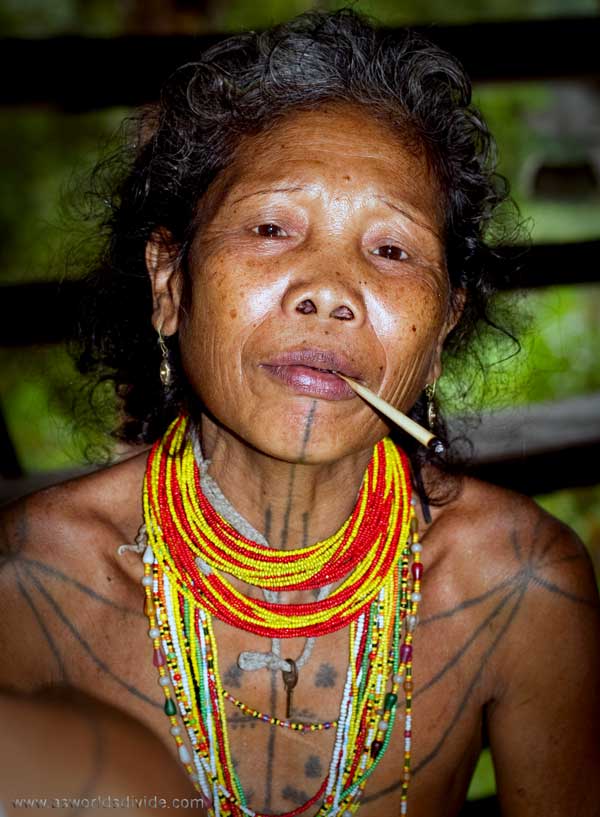
Somewhat disheartened – in that I’d placed so much confidence in the strength of honesty, I began wondering how disillusioned I am in my understanding the audience I’m hoping to reach, and the systems that may provide me access to them. A period of reflection, which, invoked by the response given by this group, thankfully, opened my eyes to something I’d actually not realized I’d lost. An ideological setting that in fact lies at the very heart of the projects objective.
Sure it reinstated me with the confidence that I don’t have to depend on my journey to find the strength in this story, great; but, far more importantly, it helped me to realize what affect the process of this past few years has had on me. How, through being so driven to achieve this vision and reliant on following the path of others to do so, I’d somehow lost sight of the simplicity of what I’d set out to do. Which, essentially, is to capitalize on the modern-technologies of my world to help deliver the voice of these Indigenous people to a large-scale audience who, ironically, may now hold the key to protecting their future.
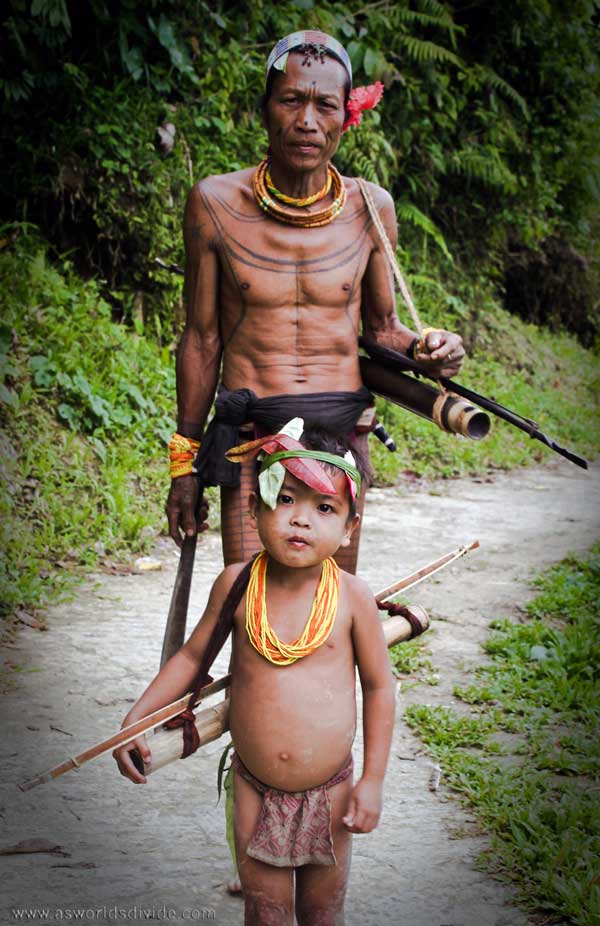
“So what does this actually mean then?” Well, and I apologise for taking so long to get to the point, but, basically, it means that, whilst I’m sure this story could indeed be transformed to fit a broadcasters criterion – and perhaps down the track it will, for now and for the goal of this project, I plan to release a more targeted version of the film over the internet. Allowing all those interested in viewing it to do so at no cost.
“Where is it at then?” Well obviously this will ensure the film a faster road to completion – being free from a mountain of commercial constraints, but, equal to the film, it’s vital that all other components are finalized and ready for release alongside its release. Namely, the Cultural and Environmental Education Program (CEEP) and website. Which, thanks to the growing support of friends, I’m pleased to say are both now in the latter stages of completion.
Obviously the key info surrounding the film (trailer, synopsis, etc.) will need to be updated too, but this – along with everything else, will be happening soon.
I do hope that the erratic path of this project is not too frustrating for those of you following along and that it will be worthwhile in the end. Thanks for your patience
Dear reader,
Whilst I’ve found working on the analysis report and program these past few weeks to be incredibly fascinating, and exciting too – allowing me to simulate what I presume to be the practices of a university student – I’ve now reached a point where, to progress, I must digress. The focus, in the hope of re-establishing productivity via the art of perception, must be temporarily excused of all things data, percentages, research studies, comparisons, numbers and so forth.
An agreement which, after some time spent rescuing the garden from the problem of now too much rain, combined with an innings sifting through a folder full of colourful frames of memory – filling the mind with nothing beyond what these invoked the imagination to reveal – I guess is currently in its process of transaction.
To add some stimulant to this otherwise inconvenient distraction though, please find below a small selection of these that, well, actually impelled me to type you this short letter.
Kind regards, Rob
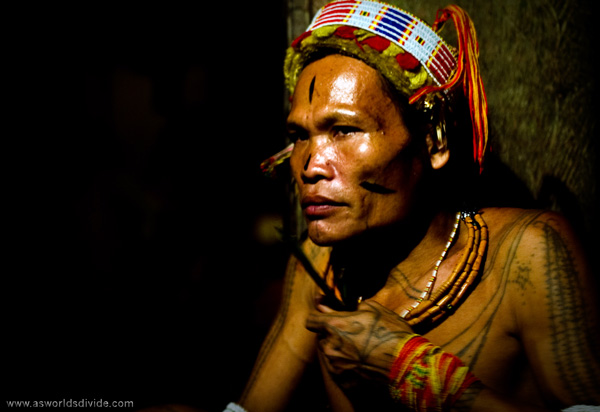
Customary paint, 'Kiniu Sailuk', which is concocted using the dust of a crushed forest stone, soot, tree sap, and a small amount of pig skin oil, is applied to Sikerei (shamans) face during the occasion of a ceremony
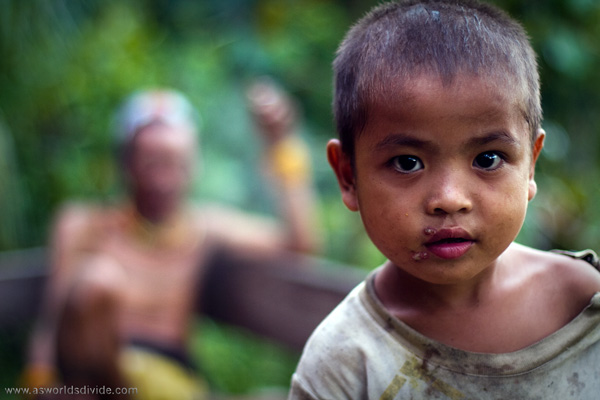
In Mentawai culture, traditionally, if the parents separate the child must always live with the father, however, if there has been wrongdoing by the father - for instance marriage taboo's were broken, the child will instead live (for the most part) with the eldest male sibling or father of the mother
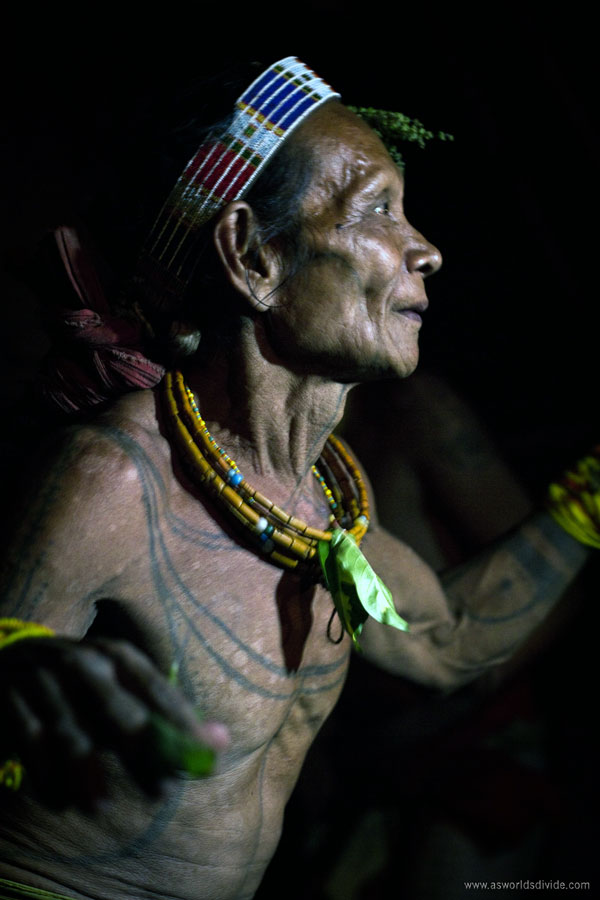
The Mentawai Sikerei (shaman), similar to those from many other Indigenous cultures, will mimic the behaviours of native animals and communicate stories through their ritual dances - 'muturut'
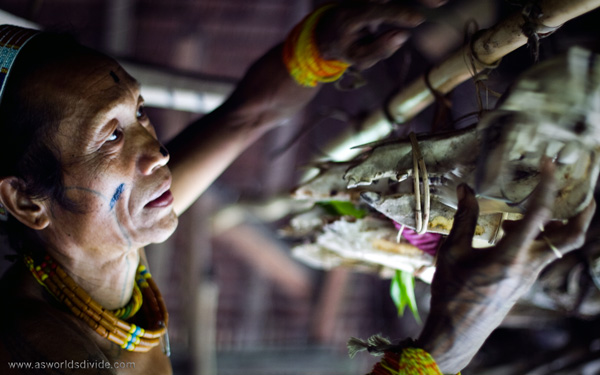
Willing its spirit to provide protection over the clan, the skulls of all animals sacrificed are rebound and hung inside the Uma
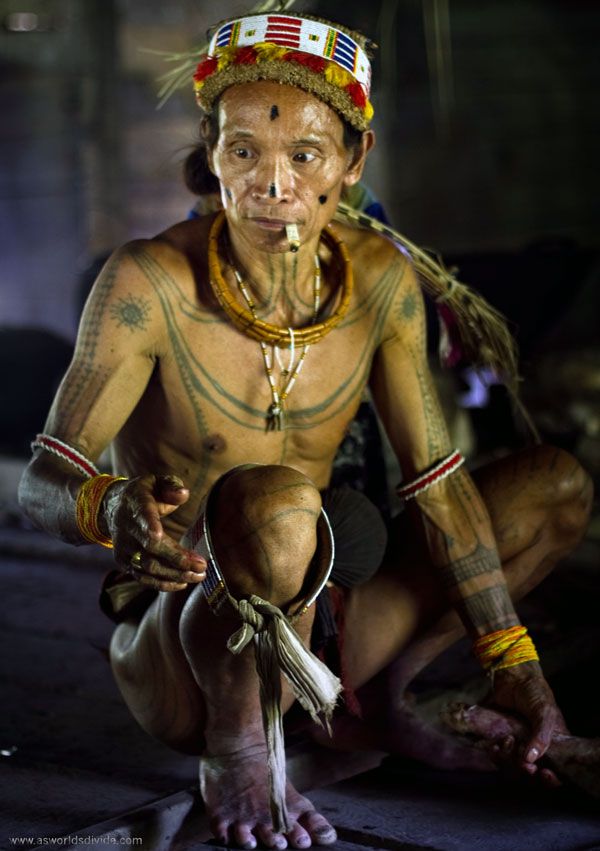
During gatherings, food - including pig, chicken, sweet potato, banana, sago, etc - will always be carefully portioned and shared amongst all members of the clan. Which will also include an offering made to the spirits, as a thanks for their safety and protection - 'pusurakat'

The clan 'longhouses', the Mentawai Uma, aside from being their 'central hub of cultural activity and existence', have been (hand) built to house up to eight or more families at any one time
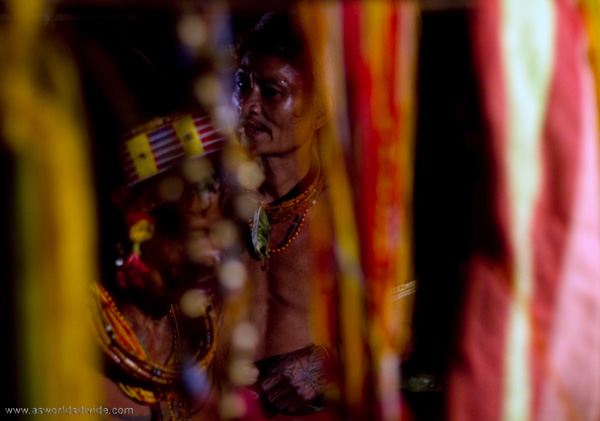
During celebration Sikerei will perform song, dance and ritual throughout the entire night - which, depending on the occasion, can be anywhere from over one or two days to an entire month

It's common to see the young Mentawai children impersonate Sikerei during times of ceremony, particularly with traditional song, dance, and decoration
Right, a reasonable question, sure… I’ll try and be brief. The film, which is currently at a stage I’m hoping is very near to that which is required, is in the hands of a few select individuals who, given their film related experience, I’m hoping can provide me a frank indication of exactly where I stand – in terms of the film’s current position and, potentially, its path forward. So, in summary, that is the whereabouts of that.
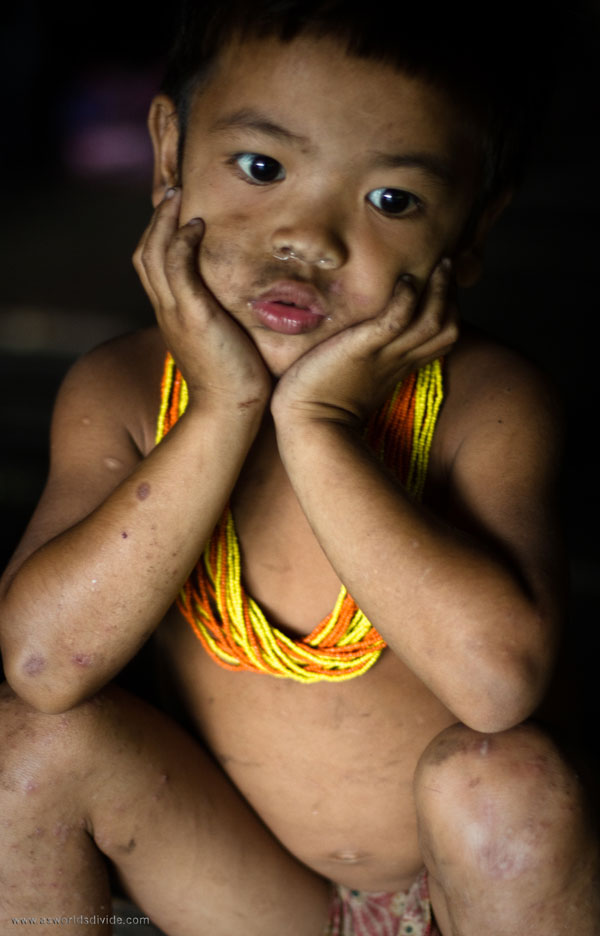
The other important factor, which is the current focus, is the work surrounding the Baseline Survey data, which, having now been translated and transferred into digital format, is allowing me a rather accurate insight into the way the Mentawai community (in focus) thinks, in relation to their current situation. For example, it reveals that 77.1% of all those surveyed believe the community would not survive without the presence of Sikerei (Shamans); that 93.9% believe they would not survive without having access to Sago, which currently grows freely in the wild; and that 97.5% believe the availability of the natural resources provided by their surrounding forest/river environment holds the key to their continued existence. Which is a substantially one-sided frequency, really.
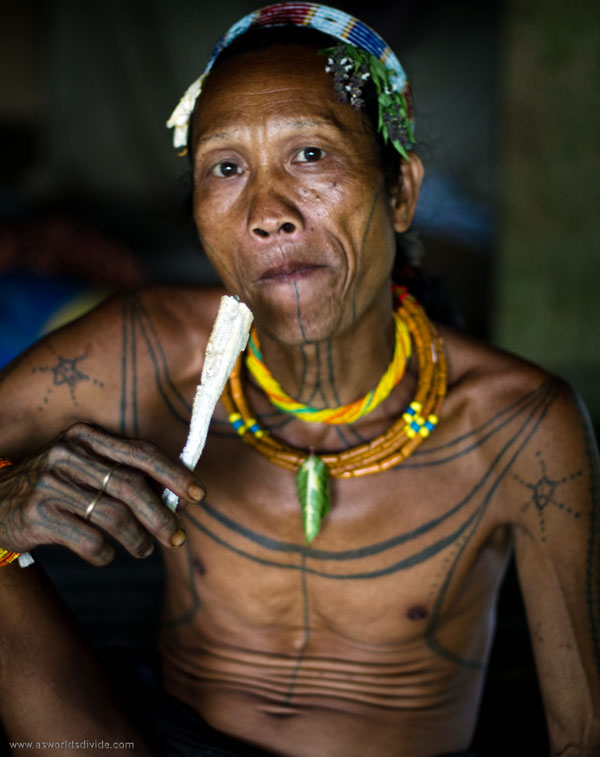
Sikerei, Aman Masit Dere, enjoying a stick of freshly cooked Sago (kapurut)
To provide some perspective to these figures, the region in focus for the survey was a small (resettlement) village located in the south of Siberut Island, where, basically – over the past decades – many of the Indigenous Mentawai people have relocated to from their homes on their family lands. The surveys (47 questions in length) were designed and targeted specifically to each demographic existing within this community – men/women, students, shamans, community/group/network leaders, and teachers. In total, across all ages and demographics, with each being surveyed individually by a member of the BS team, we were able to collect a sample of almost 500 surveys… approximately one third of the entire village.
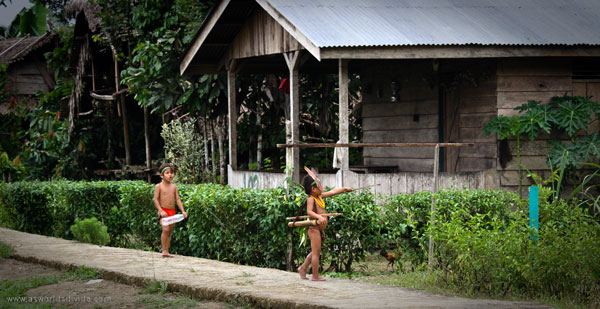
Mentawai children playing in the streets of a resettlement village
Of all the results uncovered though (through a preliminary analysis of the data), for me, there was one in particular that really stood out, which – as related directly to the primary objective of the proposed Program – is perhaps more significant than any other. A revelation, showing 93.8% of all students surveyed stated that they’re not being taught enough (or at all) about Arat Sabulungan (Mentawai culture) in school. With 89.9% of the entire sample believing the same. Which, for a community whose majority also believe that learning the skills of the forest (the basis of Mentawai culture) is more important to the children’s survival than anything else, including a literacy education, this is quite a startling contrast to the structure currently in place – which is virtually absent of any (organized) activity supporting cultural education.
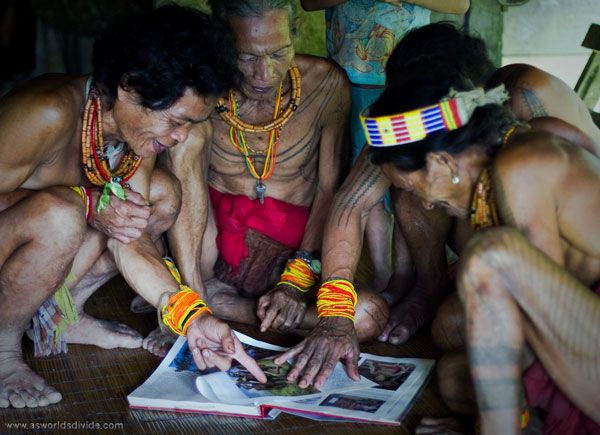
Sikerei fascinated by an image of the traditional outfit (penis gourd) worn by Indigenous men in the highlands of New Guinea
So over the coming weeks my time will primarily be given to making the necessary amendments and further continuations to the design of the Program, based of course upon the results found through the Baseline Survey data.
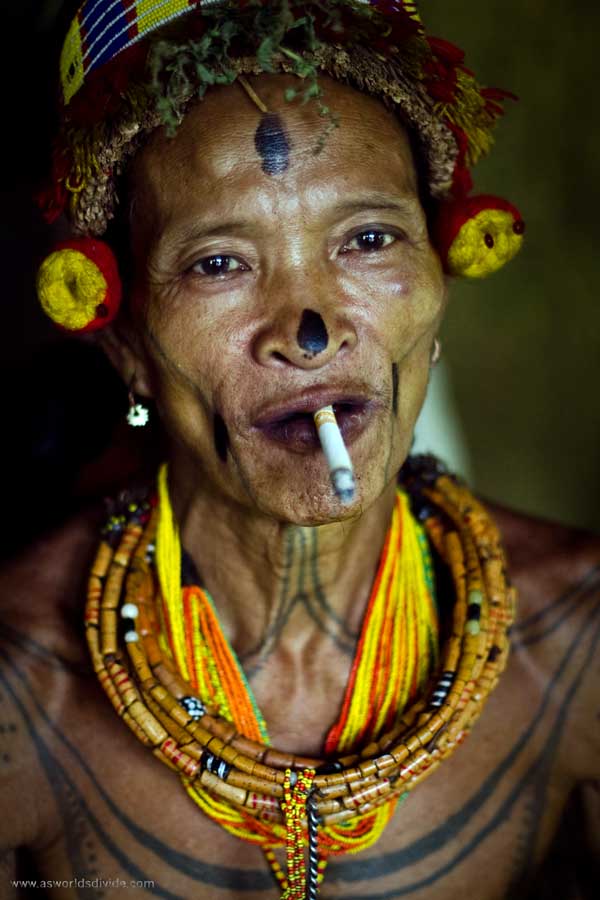
Whilst obviously there is still some work ahead in both these areas, I do feel the release of this project does grow near. More updates to come, thanks.
Although I did, rather prudently I thought, opt against carting the weight of a video camera and array of thought-to-be essential accessories back to the islands for the recent Baseline Survey activity; I did in fact manage – utilizing the advanced capabilities of the modern-day still – to capture a few moments during a ceremony given for the death of an elder (Panogru), which, as this story goes, I happen to feel are worth sharing.
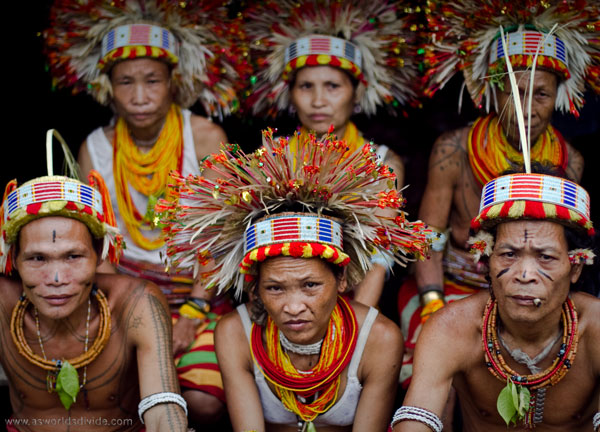
You see, approximately three or so months after a death, as way of tradition, Sikerei (Shaman), who – among other things – possess an ability to communicate with the spirits of their ancestors, the land (sanitu sibara ka leleu), the sky (… manua), the ocean/rivers (… koat), and all things natural within, will gather the clan together in an Uma (clan longhouse). Where, after ensuring all items of relevant belongings (required to satisfy the eye of the spirits) are present and suitable offerings (plant, animal, and various personal) prepared, the Sikerei – through song, dance, music, and various passages of verbal scripture – will summon the spirits to join them in cleansing the body of the deceased and of course the Uma itself, where its spirit has since been present.
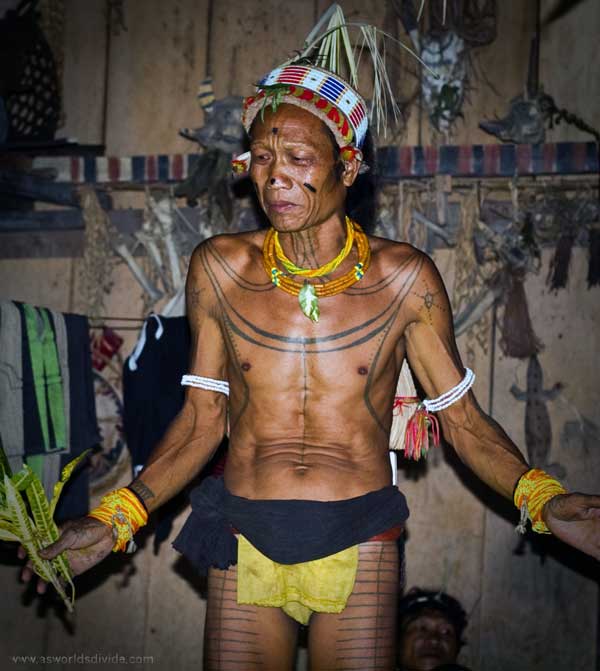
Finally, after three or four days of ceremonial ritual, the spirit is then released from the Uma and, together with the other spirits, able to move on to its place in the forest, sky, etc. An event that also concludes the grieving (termed ‘crying’) period.
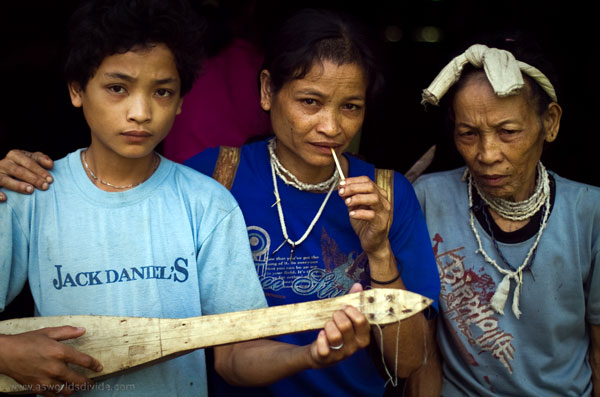
Whilst the length of this period does vary, a white cloth material worn around the neck, or, for those closest (widows), above the head (Bukuet), clearly identifies those who are immersed. However I should note that – depending on the sex and age of the deceased – this insignia does have slight variations i.e. a blue cloth signifies the mourning of a child.
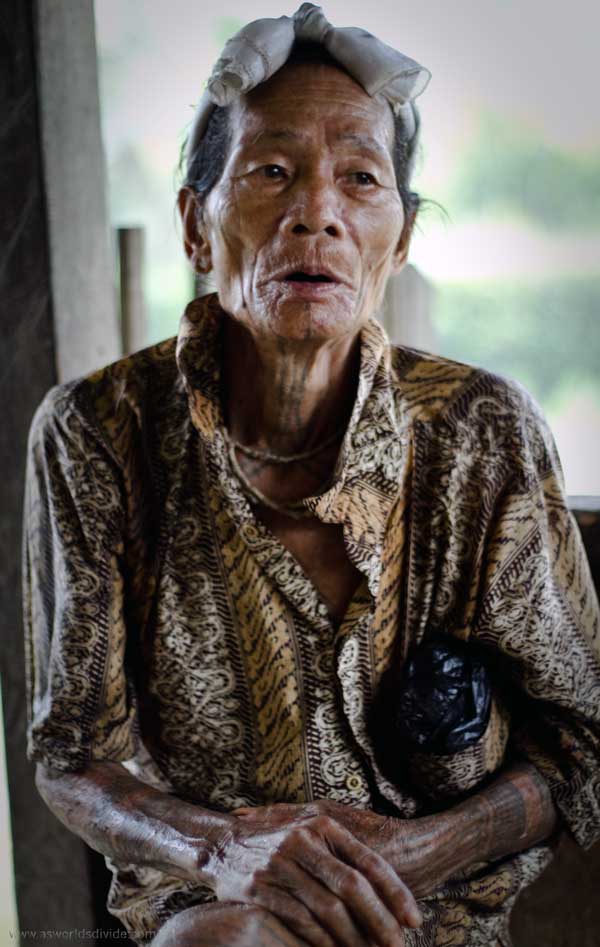
In brief, the Mentawai ceremonies, which are many (marriage, death, new born, new uma, new canoe, new kerei, illness, successful hunts, broken taboos, and so on), are in place primarily to appease the spirits – the Mentawai deities; ensuring that, as with any given member of the clan, they are to remain happy and at peace at all times, thus avoiding the probability of future illness or, in extreme cases, death.
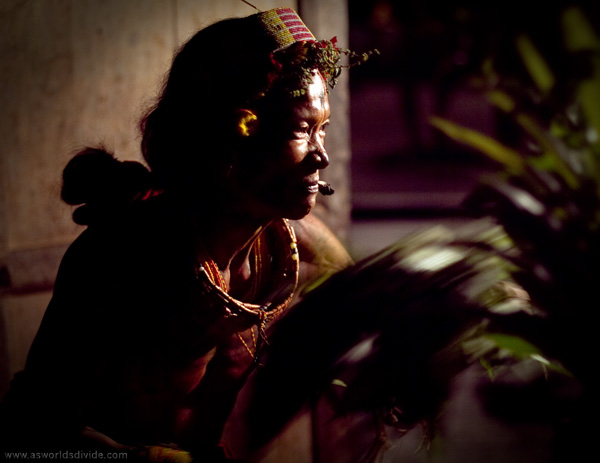
Whilst obeying cultural taboo is, of course, first and foremost in achieving this – including the requisite of them sharing all food equally, it’s also required that, after a lengthy ritual justifying the need and importance for doing so, pig and/or chicken be sacrificed during ceremony. Which, together with items gifted to a particular (spiritual) space within the Uma (Bakkat katsaila), are among the important offerings gestured to please the spirits.
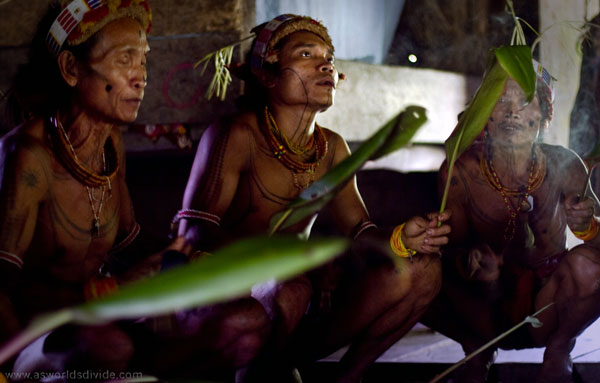
Aman Lepon, (centre), provider of the song used in the clip below, surak sabeu
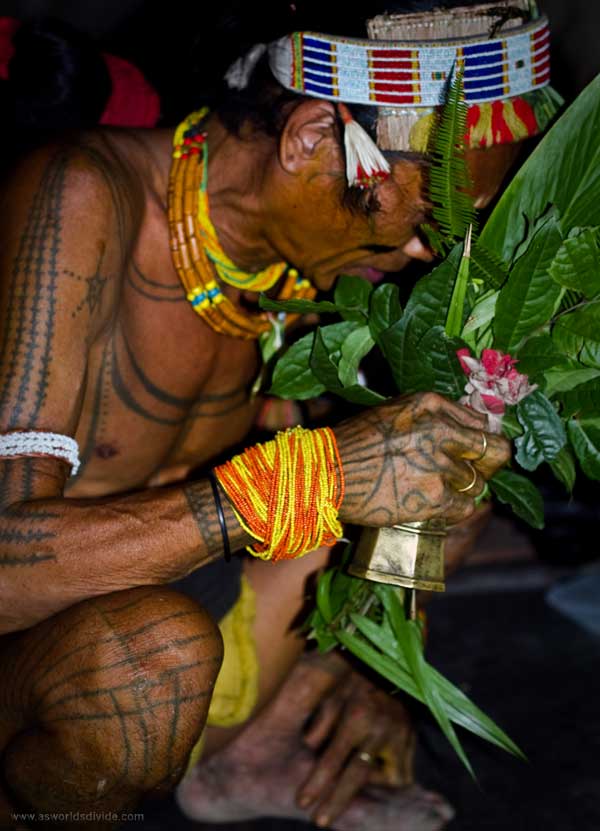
Quite interestingly, during these traditional ceremonies, which can span anywhere from one day (minor healing) to over an entire month (Sikerei inaugurations), it’s not uncommon to see the spirits enter the body of those partaking; evoking a possessed like state (Gobok) – as seen in the clip below.
In conclusion, though, I’d like to mention that, despite what may be perceived for some as seemingly unconventional practice, this system of cultural belief (Arat Sabulungan), implemented by the forefathers of Mentawai and maintained over thousands of years, fundamentally, seeks to achieve a purpose no different to that of the many other variations established throughout time. Which, quite simply, is to ensure that, by sustaining a peaceful balance between the people and their natural environment, the safety and protection for their health and well-being will always remain… a system which, noted by their current and continued existence as such today, may hold some merit.
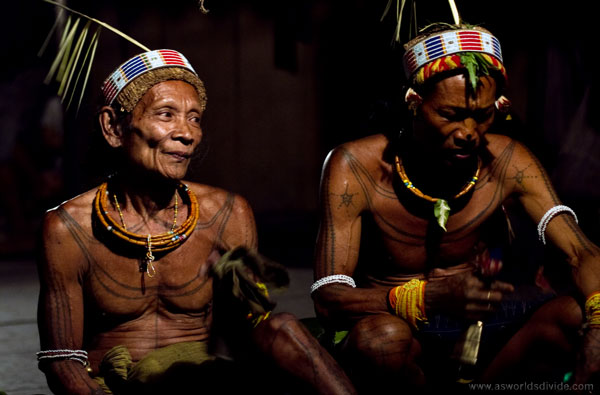
|
© Copyright Roebeeh Productions 2017 |